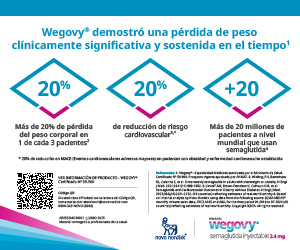P36 Relationship of antibodies and beta cell function in adolescents with type 2 diabetes
DOI:
https://doi.org/10.47196/diab.v54i3Sup.422Keywords:
Anticuerpos, Función de la célula beta, Adolescentes diabetes tipo 2Abstract
Introduction: Type 2 diabetes mellitus (T2D) has been considered for many years a metabolic disease without participation of the immune system; but in recent years this view has changed since the chronic inflammatory state and hyperglycemia that characterizes them increase the production of cytokines, resulting in autoimmune activation. T2D in adolescents is an entity that is becoming more frequent, originated by the increase in obesity in our country which generates a disfunction of the beta cell that may be associated with presence of antibodies.
Objective: Determine the relationship between antibodies and beta cell function in adolescents with T2D.
Material and methods: cross-sectional, retrospective study in which were review the medical records of 30 adolescents with T2D between 12 and 17 years old who attended at “Centro de Investigación en Diabetes, Obesidad Nutrición (CIDON)” in Lima-Peru. Demographic data, anthropometric measurements, basal glucose, glycated hemoglobin and basal peptide C and antibodies: anti glutamate decarboxylase (ANTI-GAD), antiInsulin (AAI), Anti-IA2 (anti tyrosine phosphatase 2) were collected. Then they were divided into two groups: those with at least one positive antibody and those with negative antibodies. Also, the relationships of antibodies with beta cell function parameters were found.
Results: 30 adolescents with T2D were evaluated, of which 50% were female. 93.3% presented acanthosis nigricans. The most frequent antibody found was anti-insulin 16.67%. The presence antibodies were significantly related to decline to peptide C (p= 0.014). No statistical significance with HbA1c, glucose, acanthosis nigricans, and sex was found (p> 0.05).
Conclusions: we found a relationship between the presence of antibodies and peptide C levels declined in adolescents with T2D. The presence of antibodies could be related to poor metabolic control in this population.
Downloads
Published
Issue
Section
License

This work is licensed under a Creative Commons Attribution-NonCommercial-NoDerivatives 4.0 International License.
Dirección Nacional de Derecho de Autor, Exp. N° 5.333.129. Instituto Nacional de la Propiedad Industrial, Marca «Revista de la Sociedad Argentina de Diabetes - Asociación Civil» N° de concesión 2.605.405 y N° de disposición 1.404/13.
La Revista de la SAD está licenciada bajo Licencia Creative Commons Atribución – No Comercial – Sin Obra Derivada 4.0 Internacional.
Por otra parte, la Revista SAD permite que los autores mantengan los derechos de autor sin restricciones.




























